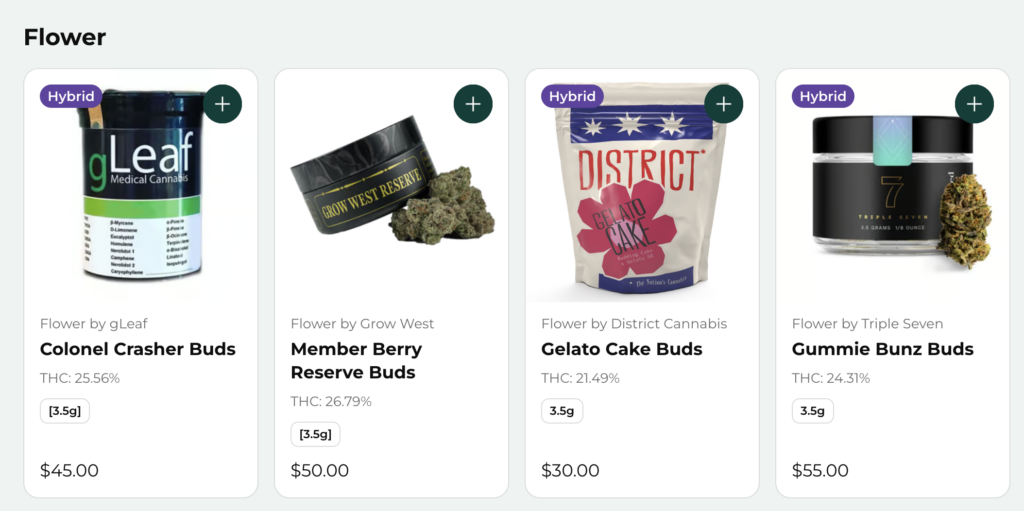The 🌱 industry is thriving, but keeping up with the nuances of a dynamic product catalog can feel like herding cats. Both marijuana manufacturing standard operating procedures (sop’s) and cannabis dispensary sop’s should include best practices for maintaining the product catalog. From ensuring consistent strain names to navigating state-specific regulations, a well-maintained product catalog is the cornerstone of smooth operations, compliance, and customer satisfaction. Here’s a guide to help cannabis operations managers navigate the challenges and best practices of creating a top-notch catalog that adheres to dispensary sop’s.
Why a Well-Maintained Product Catalog Matters for Cannabis SOP’s
To know me is to know my mantra in the cannabis industry is “Data is Queen” and the product catalog is the throne. A well-organized product catalog is more than just a list of items; it’s a living system that ensures:
In the context of cannabis dispensary sop’s, it’s crucial to develop a catalog that reflects the highest standards of accuracy and compliance.
- Accurate Inventory Management: A clear and consistent catalog helps prevent overstocking or stockouts.
- Compliance: Avoid fines and penalties by adhering to state-specific terminology and categorization requirements including accurate sizes and weights.
- Customer Satisfaction: Provide clear, accurate product information to enhance the customer’s shopping experience. If you are doing this right, your product catalog is driving your online menu.
- Operational Efficiency: Reduce confusion for staff and streamline the ordering process.
Adhering to established cannabis dispensary sop’s will help you avoid potential pitfalls.
Understanding the impact of cannabis dispensary sop’s on your operations is vital.
The clarity provided by cannabis dispensary sop’s will streamline your inventory management.
Utilizing cannabis dispensary sop’s helps maintain consistency in product labeling.
One critical aspect of cannabis dispensary sop’s is ensuring accurate product categorization.
Common Industry Struggles
Understanding Branding
It seems in the cannabis industry, employees are often confused on what is a brand vs. what is a vendor or manufacturers name. Maybe the manufacturers being slow to create product brands and define their quality lines is to blame, but it is time we figure this out as an industry. We need to make sure both employees and consumers can recognize brand names and distinguish it from the manufactures name. Inventory managers need to be trained on entering a brands details into the systems in a way that honors the brand. Proper spelling of the brand name, product names, and using the brands images and descriptions will help consumers understand the products better, driving sales and ensuring consumer satisfaction.
Implementing effective cannabis dispensary sop’s can address common industry struggles.
Proper adherence to cannabis dispensary sop’s can greatly improve customer experience.
The Many Faces of Granddaddy Purple
One of the biggest struggles in the cannabis industry is inconsistency in naming conventions and strain names specifically are a challenge. How many ways can one spell “Granddaddy Purple”? Apparently, too many: Granddaddy Purple, Grandaddy Purple, Grand Daddy Purple, GDP, Granddaddy Purps… the list actually does go on. These inconsistencies confuse customers and our data and can lead to inventory errors. Proper spelling and standardizing naming conventions is critical.
Mislabeling Product Types
We get it, there is a difference between batter and budder. I get the budder pun and why we don’t spell it butter. But, what’s the difference between “Batter” and “Badder”? There is none. Whether this is a category, a product type or part of the product naming convention, this is another example of where our data is getting skewed. Ensure all product types are accurately spelled, don’t get to creative with the spelling of existing words or it’s going to get more confusing than it already is.
State-Specific Vocabulary & Requirements
Words matter. When it comes to cannabis business licensing and rules, some states prohibit terms like “disposable vape pen,” so businesses adopt “all-in-ones” instead. Similarly, in states where edibles are restricted, lozenges or pills might be classified under “Orals,” but let’s face it, no one likes that term. So, can we agree to call them “other consumables?” Adopting customer-friendly language while maintaining compliance is a delicate balancing act.
Many states also have specific regulations on cannabis infused products and edibles, requiring the product catalog to include things like, instructions for use or directions for storage. Other information or warnings may be required on labels or packaging. All of these details may become part of your product catalog and should be part of your cannabis manufacturing and dispensary sop’s.
Best Practices for Creating a Product Catalog
1. Standardize Naming Conventions
Create a style guide for strain names, product types, and subcategories. Use consistent spelling and avoid slang or overly creative names that might confuse customers or regulators. For example:
- Use “Granddaddy Purple” as the standard, this is the proper spelling, let’s not use all the variations. When adding a new strain to your strain catalog, be sure to check for similar spellings to help avoid duplicates.
- Define whether you’ll use “Batter” or “Badder” universally. I would love for the industry to agree on batter for this one, but if we can’t agree as an industry at the product level, than your company should at least agree at the category or product type level.
Regular audits of cannabis dispensary sop’s can help maintain catalog accuracy.
2. Categorize Thoughtfully in your Manufacturing and Dispensary SOP’s
Understand the difference between product categories , sub categories and product types. Categories might include “Flower” or “Concentrates,” while sub categories or product types are more specific, such as “Buds” and “Shake” or “Live Resin” and “Cured Resin”. This ensures your catalog is intuitive and user-friendly. Your seed to sale software may allow for various levels of categorization.

A well-trained team is essential to effectively implement cannabis dispensary sop’s.
3. Adhere to State-Specific Regulations
Stay informed and aware about terminology restrictions and general regulations by state. Be sure your manufacturing and/or dispensary sop’s specify requirements. For example:
- Avoid using “Edibles” in jurisdictions where the term is prohibited; use “Infused Products” or “Other Consumables” instead. If you are a multi state operator, you may want to get ahead of this from the national catalog perspective. Put items that are commonly allowed in non edible states, like pills, capsules, tinctures, pills in their own category, separate from edibles, which we can define as food items.
- Understand weights, equivalencies, THC limits and potency labeling requirements. The weights or total amount of THC may or may not be part of your naming convention, but it will deffinitley be part of your product catalog.
The synergy between your product catalog and cannabis dispensary sop’s can drive business success.
4. Train Your Staff
Employee training on your cannabis manufacturing and/or dispensary sop’s is essential for catalog accuracy. Educate your team on:
- Naming conventions.
- Category distinctions.
- State-specific rules and compliance standards.
- How to use your inventory management system effectively.
- How to honor brand names
5. Audit Regularly
Schedule routine audits of your product catalog to identify and correct inconsistencies, duplicate entries, and outdated information.
6. Leverage Technology
Use inventory management systems that allow for:
- Tagging products with attributes like “Indica” or “Citrus Scent.”
- Easy updates to reflect regulatory changes.
- Integration with online and in-store menus for consistent customer-facing information.
Employee Training: The Unsung Hero of Product Catalog Management
Even the best-designed product catalog can fail without proper staff training. Equip your team to:
- Request and honor brand guides
- Recognize common strain names and their variants.
- Navigate the inventory system efficiently.
- Communicate product updates to customers effectively.
- Understand compliance requirements to avoid errors.
Conclusion
Managing a cannabis product catalog is no small feat, but with standardization, training, and a keen eye for detail, you can ensure a seamless operation. By addressing industry challenges such as inconsistent naming, state-specific regulations, and frequent updates, your catalog can become a powerful tool for inventory management, compliance, and customer satisfaction.
Remember: A well-maintained product catalog isn’t just about keeping things tidy—it’s about building trust, efficiency, and profitability in a competitive industry.
Maximize the impact of your cannabis operations with our tailored cannabis business SOPs for dispensary and manufacturing management. We are happy to train your staff or help you by regularly auditing and “scrubbing” your catalog. We even do images! Contact us today to streamline your processes and elevate your business.




